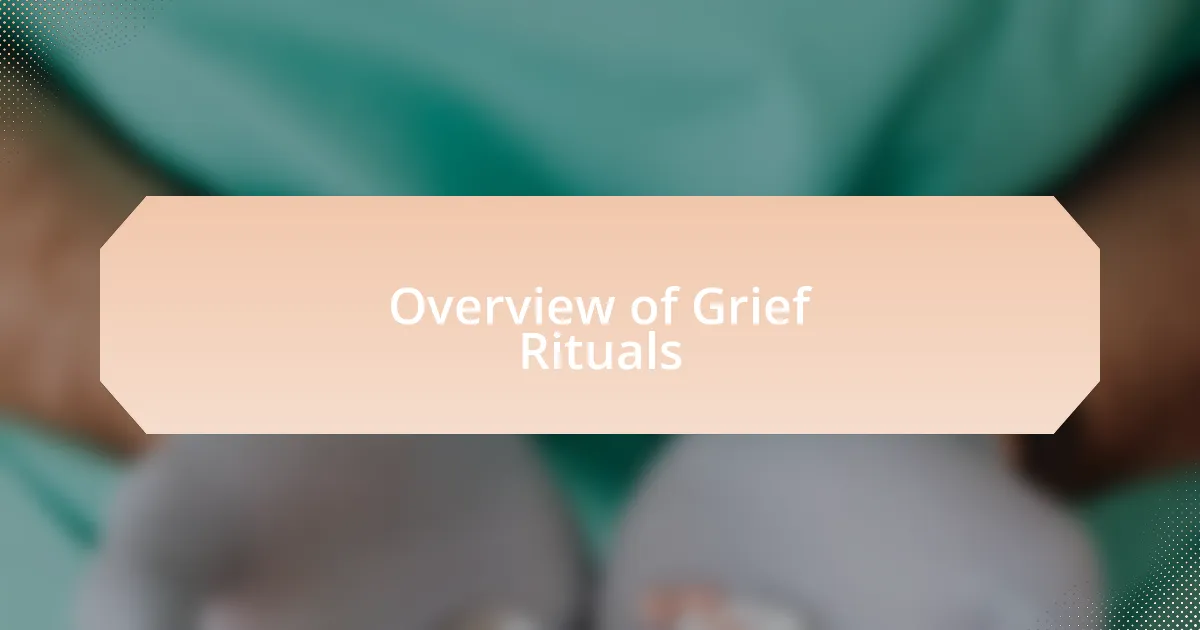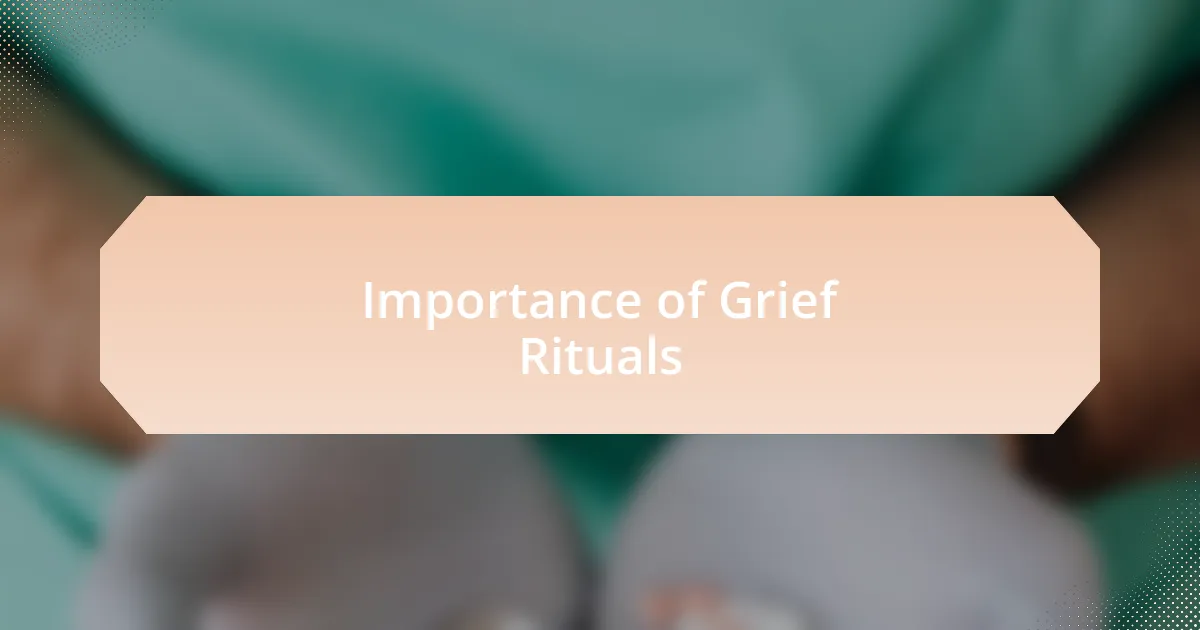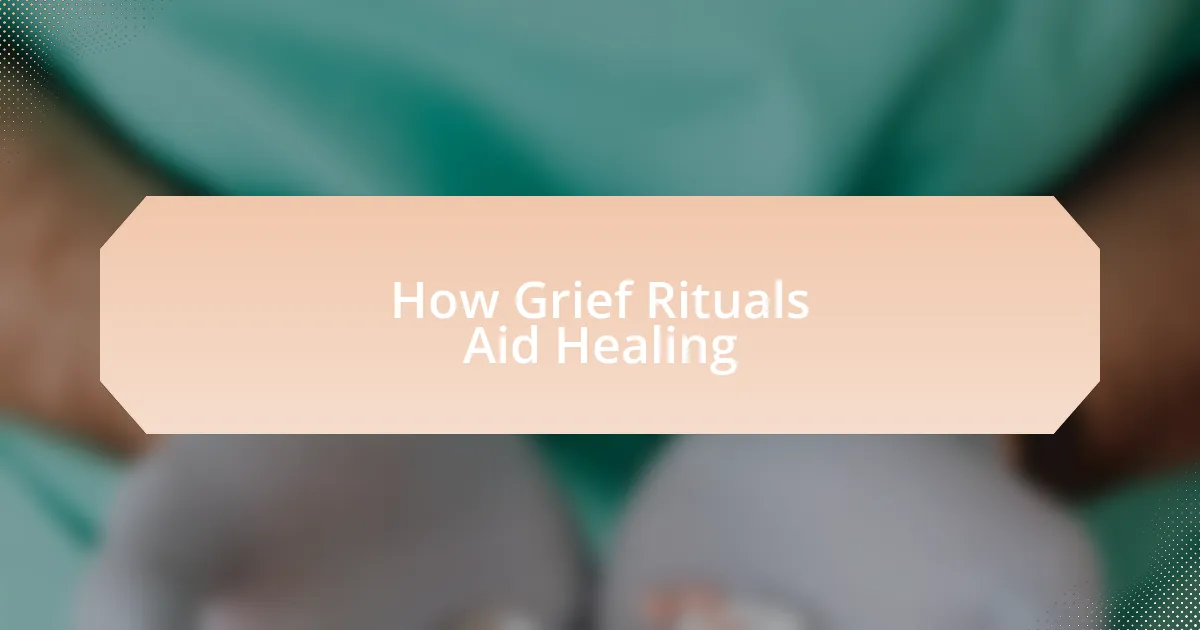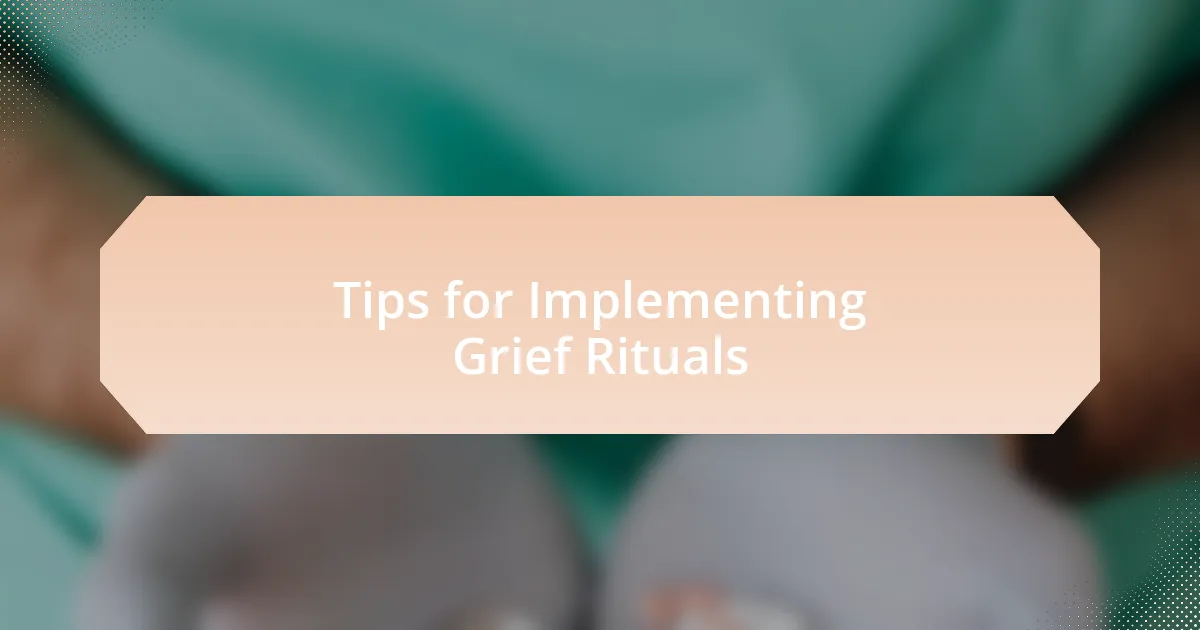Key takeaways:
- Hospital ministry combines spiritual care with emotional support, emphasizing the importance of human connection during crises.
- Grief rituals help individuals process loss, fostering community and emotional expression, while transforming pain into remembrance and hope.
- Effective grief rituals in hospitals, such as personalized memory boxes and candle lighting, create sacred spaces for healing and connection among bereaved individuals.
- Incorporating art and storytelling into grief rituals enhances emotional resilience and allows for collective healing through shared memories.

Understanding Hospital Ministry
Hospital ministry is a unique blend of spiritual care and compassionate support offered within the healthcare environment. It serves not just the physical needs of patients but also their emotional and spiritual well-being. I remember a time when I sat with a grieving family in a waiting room, unsure of what to say, yet feeling a profound connection that transcended words.
As I engaged with individuals in crisis, I often wondered how we could bring comfort in the chaos of a hospital setting. I’ve witnessed the transformative power of simply listening; sometimes, the act of being present was the greatest gift I could offer. Each interaction seems to remind me that every soul has a story, and every moment counts in their healing journey.
Ultimately, hospital ministry invites us to reflect on our shared humanity. We realize that amidst the beeping machines and sterile walls, the spirit can find solace and strength. What might happen if we all took a moment to extend kindness and understanding in such spaces? I truly believe that these small acts can cultivate hope and healing, even in the darkest scenarios.

Overview of Grief Rituals
Grief rituals are intentional practices meant to honor and process the profound sorrow that comes with loss. I recall attending a candlelight vigil for a family member of a patient, where the soft glow of flames symbolized both remembrance and hope. It struck me how these simple acts can create a communal space for shared grief and healing.
I’ve often thought about how engaging in rituals can aid individuals in coping with their emotions. For instance, I once participated in a day of reflection, where we shared stories and memories of a loved one we had lost. This collective sharing not only deepened our connection but also allowed each of us to confront our grief in a supportive environment. Have you ever noticed how the act of reminiscing can transform pain into a celebration of life?
Each culture has its own unique rituals that guide people through the sorrow of loss, from memorial services to personal moments of remembrance. I’ve learned that these customs can be incredibly healing, offering structure amidst the chaos of grief. It’s fascinating how engaging in these practices not only honors those we’ve lost but also nurtures our spirits, allowing us to move forward with hope and resilience.

Importance of Grief Rituals
Grief rituals serve as essential tools for processing loss, providing a much-needed framework during a chaotic time. I remember a time when I placed flowers at a grave during a memorial service. That act of laying something beautiful down transformed my sadness into a tangible offering, reminding me that love endures even in loss.
What strikes me about grieving rituals is their ability to foster connection—not only with our loved ones who have passed but also with those who share our sorrow. I once attended a gathering where individuals wove together stories and laughter between tears. Witnessing this blend of emotions made me realize how crucial it is to maintain those bonds, especially in moments of vulnerability. Isn’t it comforting to know that others are feeling similar heartaches?
Furthermore, these rituals cultivate a safe space for emotional expression. I’ve participated in symbolic acts, like writing letters to the deceased and then burning them in a small fire pit. Each release brought me a profound sense of relief, as if I was freeing my feelings into the universe. Could it be that engaging in these rituals not only honors the dead but also allows us to reclaim our narratives amidst the pain?

How Grief Rituals Aid Healing
In my experience, grief rituals offer compelling avenues for healing by encouraging reflection on our loved ones’ lives. I recall an evening spent sharing memories around a candlelit table, each flickering flame representing a cherished story. That gathering illuminated the shared joy in remembrance, highlighting how these rituals can transform sorrow into celebration, reminding us of the light our loved ones brought into our lives.
The process of participating in grief rituals often leads to unexpected revelations. I remember attending a walking memorial where we traced the paths my friend used to take. As I walked, each step felt like a conversation with her spirit, bringing me closer to understanding my grief. This active participation can solidify our connection to the deceased, fostering a sense of continuity despite their physical absence. Isn’t it fascinating how movement and memory intertwine to promote healing?
Also, grief rituals can facilitate community support, which is essential in the grieving process. During a recent ceremony, I witnessed friends and family create a collective art piece, each adding their unique touches as a tribute. There was something incredibly powerful about working side by side, turning our heartbreak into a cohesive expression of love. How often do we overlook the power of unity in pain? Engaging in these moments not only honors our loss but also reinforces the idea that we are never alone in our journey through grief.

Effective Grief Rituals in Hospitals
Engaging in effective grief rituals within a hospital setting can significantly ease the burdens of loss. I remember a particularly moving instance during a memorial service held in the hospital chapel. The ambiance was filled with soothing music, and as we each placed a flower on the memory table, it felt as if we were weaving a tapestry of remembrance. This small but impactful act connected us all, even in our shared sorrow, helping transform the sterile hospital environment into a sacred space for healing.
One approach that resonated deeply with me involved creating personalized memory boxes for loved ones. Patients and their families were invited to decorate these boxes with photos and mementos, fostering a tangible connection to their memories. I watched as a mother placed her child’s favorite toy inside, tears streaming down her face. In those moments, I realized how important it is to ground memories in physical objects, allowing a sense of peace to emerge from the chaos of grief. Don’t you think that physical representations of love can help keep the spirit alive?
Another effective ritual is the symbolic lighting of candles during group sessions. I distinctly remember a night when a nurse organized this intimate gathering, encouraging us to share a story as we lit our candles. Each flame illuminated not just the room but also the warmth of our shared experiences. It struck me then how such simple actions can create powerful bonds, reminding us that grief can bring people together. Isn’t it amazing how the act of lighting a candle can illuminate not just our memories but also our resilience?

Tips for Implementing Grief Rituals
When implementing grief rituals, it’s vital to create an environment that feels safe and welcoming. I recall a time when we organized a shared meal for bereaved families. As we gathered around the table, the act of breaking bread together fostered a sense of community. It made me wonder, how often do we overlook the healing potential of simply sharing a meal?
Consider involving art as a form of expression in grief rituals. I had the opportunity to guide a painting workshop where participants could visually express their feelings about their loss. Some created powerful images that depicted their grief, while others painted symbols of hope. It struck me that sometimes the colors and strokes of a brush can articulate what words cannot. Could art be the bridge between sorrow and healing?
Another tip is to include rituals that encourage memory-sharing. During one gathering, we had an open mic where attendees could share stories about their loved ones. The room filled with laughter and tears as memories were recounted. It made me reflect on how storytelling not only honors those we’ve lost but also strengthens our emotional resilience. Isn’t it liberating to voice our memories and let them echo in the hearts of others?